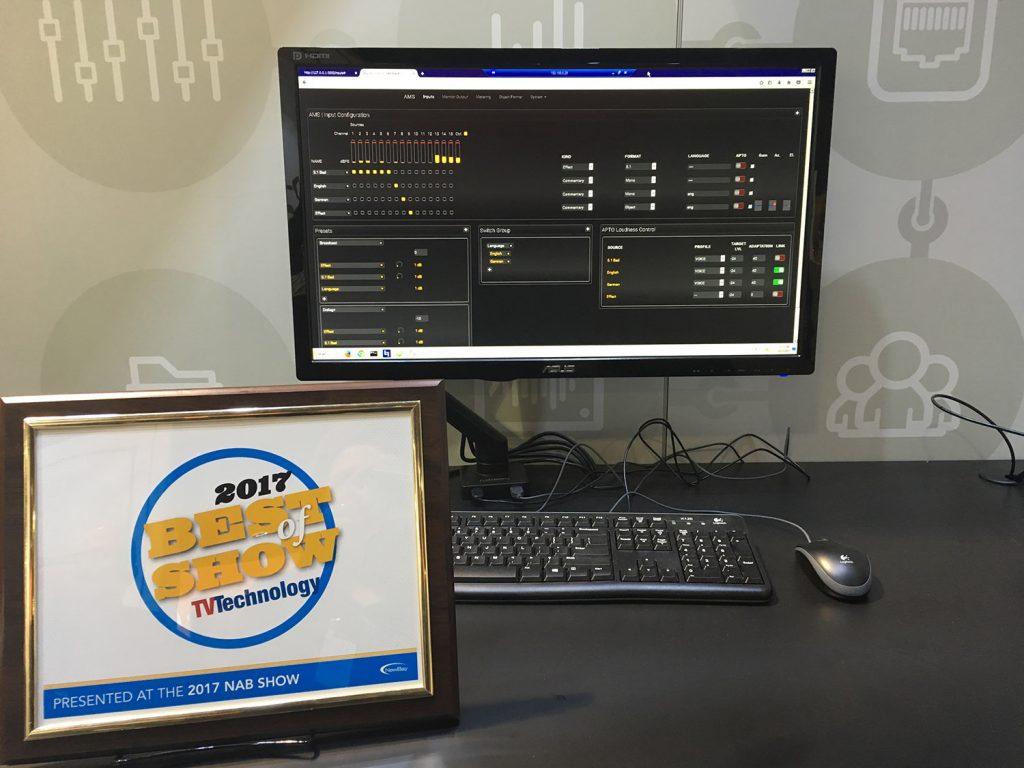Broadcast professionals and consumers alike can benefit from the unique capabilities MPEG-H offers, as the technology is not limited to only providing immersive sound for a natural listening experience. It also allows for personalization of the audio mix via a control interface on viewing devices, which include: selecting from different commentators for sporting events, or adapting the volume to enhance dialogue intelligibility. Moreover, with MPEG-H, playback is tailored to sound best on a range of devices and environments – from smartphones to home theaters – enabling universal delivery.
The Linear Acoustic AMS is designed for live broadcast and utilized to actively author, render and monitor immersive audio programs in real-time. Its web interface allows the authoring engineer to easily control the aforementioned interactive features of MPEG-H and to define various listening presets, another concept the MPEG-H TV Audio system offers. Here, individual audio elements such as channel assignments, objects or scenes are combined with user-specified static and dynamic metadata to create an immersive and fully personalized sound experience.
At NAB 2017, which took place from April 24 to 27, 2017, the Linear Acoustic AMS received the “Best of Show 2017 Award” from TV Technology magazine.

Further information about Linear Acoustic AMS is available here: https://www.telosalliance.com/Linear/Linear-Acoustic-AMS-Authoring-Monitoring.
All pictures taken by Fraunhofer IIS


Any plans to release a Linux version encoder/decoder for use in a Linux DAW?
Hi,
currently nothing concrete, no.